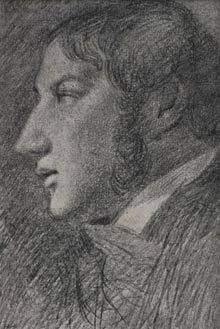
Early life
John Constable was born 11 June in East Bergholt, Suffolk where he spent most of his life. He was the son of a wealthy mill owner and coal merchant. Growing up, John helped with his father’s business and spent considerable time absorbed in nature, drawing sketches of the countryside. He referred to his ‘careless boyhood’ as being a factor in his journey towards becoming a painter. In particular, his childhood walks with the sights and sounds of the countryside drew him into painting.
“the sound of water escaping from mill dams etc., willows, old rotten planks, slimy posts, and brickwork, I love such things.”
He was mostly self-taught, though, in 1799, he was able to persuade his father to allow him to pursue a career in art – and after his father agreement, he entered the Royal Academy School for a short time, where he studied great artists such as Thomas Gainsborough and Peter Paul Rubens.
His most famous paintings were of the area around Dedham Vale where he lived. He painted everyday scenes of life – often evoking an untouched rural idyll. It was a break with the current fashion of seeking more romantic images of ruins and wild landscapes. Despite gaining formal training in art, Constable believed the greatest art came from using the direct inspiration of nature, rather than using various techniques and imagination to impose oneself on art.
“When I sit down to make a sketch from nature, the first thing I try to do is to forget that I have ever seen a picture”
– John Constable
John Constable The Hay Wain
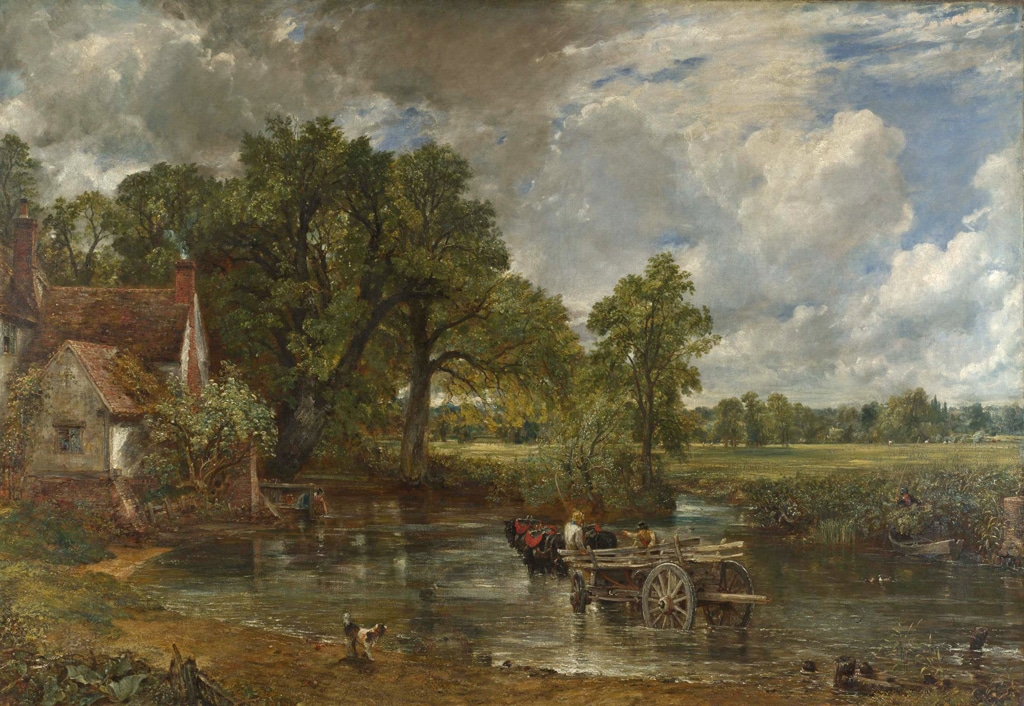
In his lifetime, John Constable never achieved great financial success. He turned down an opportunity to become a professional artist for Great Marlow Military College – he was determined to make his way as a landscape painter, whatever the cost. His fame only grew after his death, and he is now one of the most famous and well known British painters.
To make ends meet, Constable often drew portraits. But, it was something he never really enjoyed. His heart was drawn to capturing the essence of the British countryside.
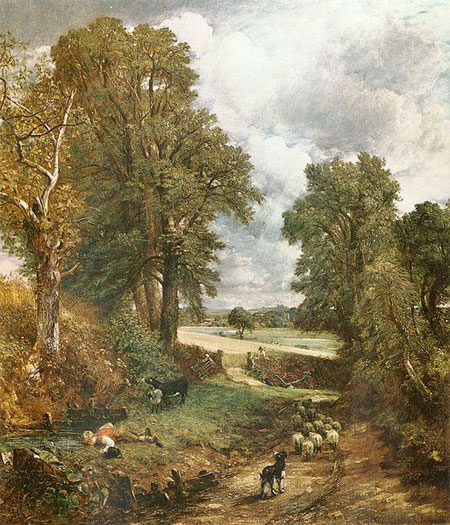
John Constable’s Cornfield 1821
Constable exhibited his paintings across England at the Liverpool Academy, Birmingham Society of Arts and the Worcester Institution, but his paintings did not sell well. Ironically, he sold more paintings in France than his native England. But, when given the chance to travel to promote his paintings abroad, he said he would rather “be a poor man in England than a rich man abroad.” In 1824, he received a gold medal from Charles X for one of his works shown at the prestigious Paris Salon.
In October 1816, despite opposition from his family, John married his childhood friend, Maria Bicknell. In 1817, they moved to Keppel Street, Bloomsbury in London. Later, after his wife became ill in London he rented a house on Hampstead, which in those days was a rural idyll.
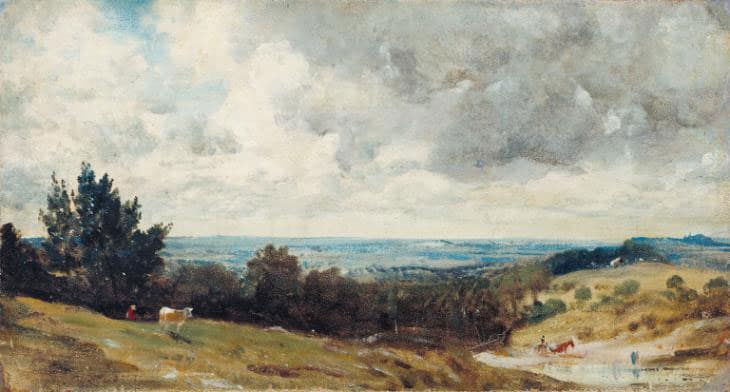
View from Hampstead Heath (c. 1820-22)
John painted many watercolours of cloud formations from his home in Hampstead. To Constable, the sky was a key feature of landscape paintings – setting the tone of the whole scene. He wrote of the sky that it was “the keynote, the standard of scale, and the chief organ of sentiment.”
They had seven children and John was heartbroken when she died in 1828. Writing to a friend, he remarked on her death.
“Hourly do I feel the loss of my departed Angel—God only knows how my children will be brought up. I shall never feel again as I have felt, the face of the World is totally changed to me.”
He spent the remainder of his life looking after his children himself, though he was always tinged with grief and melancholy and dressed mostly in black. John Constable was elected an Associate of the Royal Academy in 1821 when he was 52 and late into his career as a painter. He gave a series of lectures at the Royal Institution on landscape painting.
Death
Constable died on 31 March 1837, aged 58. The cause of death was apparent heart failure. He was buried with his wife Maria at St John-at-Hampstead Church in London.
Art of John Constable
His style is reminiscent of the Classic Masters, to some extent he was influenced by Dutch artists such as Jacob van Ruisdael and Peter Paul Rubens. However he soon developed is own innovate, freestyle, which gave an added impressionistic feel to his paintings. For example, ‘Stonehenge’ gives a mythical impression of this timeless English monument.
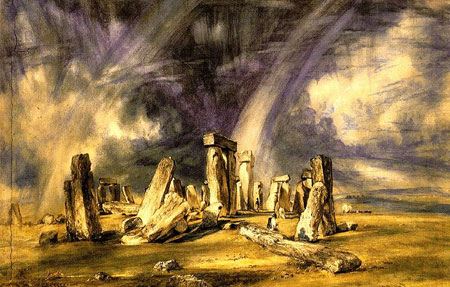
Stonehenge 1835
After painting Stonehenge, Constable said:
“The mysterious monument of Stonehenge, standing remote on a bare and boundless heath, as much unconnected with the events of past ages as it is with the uses of the present, carries you back beyond all historical records into the obscurity of a totally unknown period.”
Citation: Pettinger, Tejvan. “Biography of John Constable”, Oxford, UK. www.biographyonline.net, Published 21 Dec 2009. Last updated 5 March 2020.
John Constable: The Making of a Master at Amazon
The Haywain scene in Flatford today
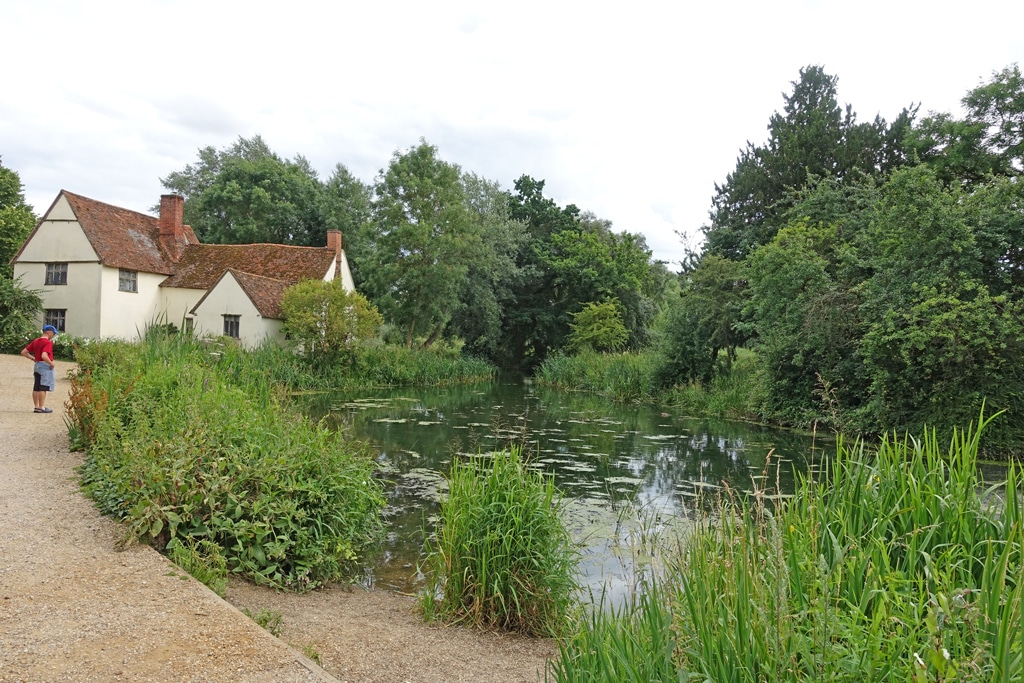
Photo: Tejvan
Related pages

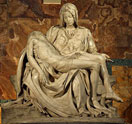
Famous 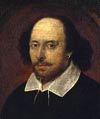
- John Constable at Amazon.co.uk
- John Constable at Amazon.com


Leave comment